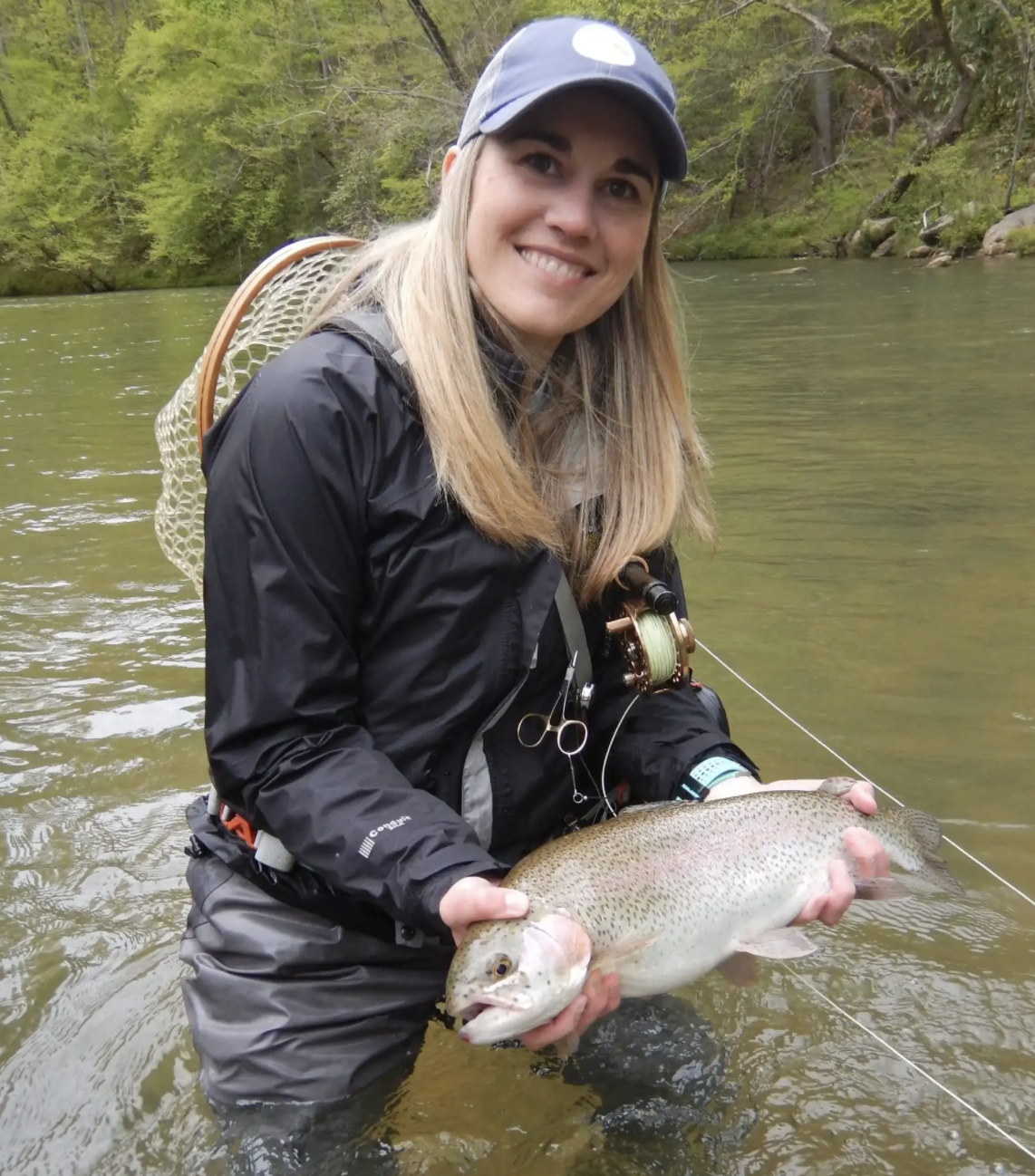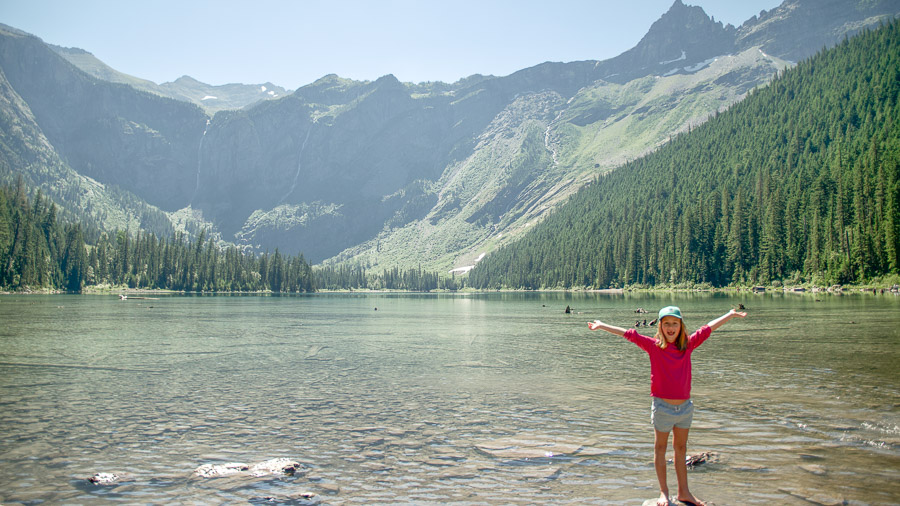
Glacier National Park has over 1,606 miles of streams, 253 snow-fed lakes, 22 kinds of fish and six species of trout. With odds like that, you would think anglers would be flocking to this park. However, when planning our family vacation to Glacier for August 2022, the reading material on fly fishing was scarce. The research I was able to turn up mainly suggested hiking several miles to backcountry lakes with a considerable amount of elevation change. As I reported this to my family, it was met with groans from my two elementary-age children. Nonetheless, with water like that, I knew we could find fish for the kids to catch. There were a few tricks we learned along the way.
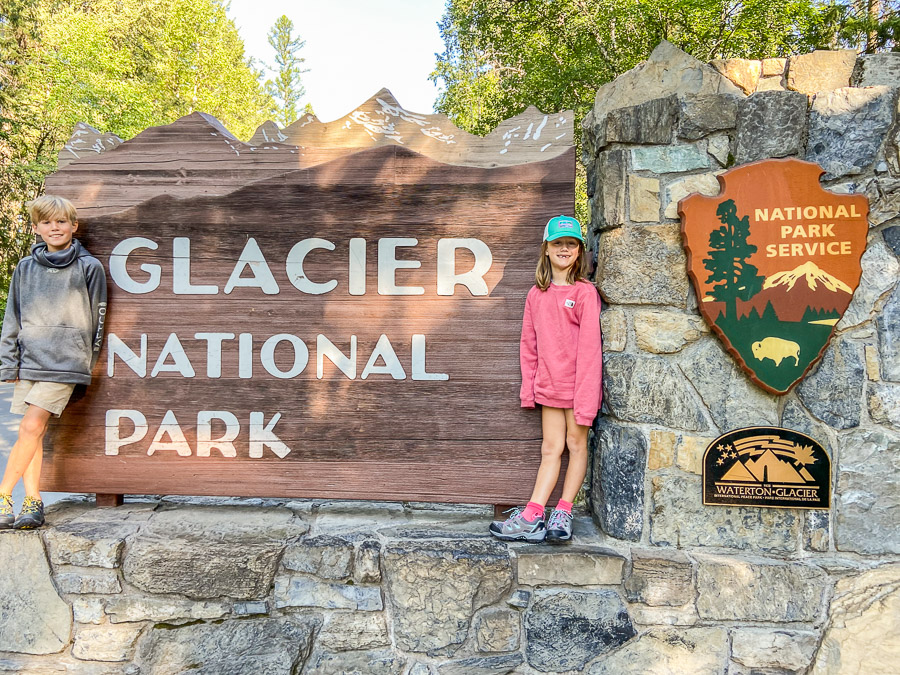
Consider the time of year
Glacier National Park gets an average of over 10 feet of snow most winters, and this water has to melt somewhere in the spring. Most local fly fishing shops advised not to even think about fishing the streams until mid-June due to the high water levels. August 2022 had the perfect stream level due to the lack of recent rainfall and normal snowmelt that winter.
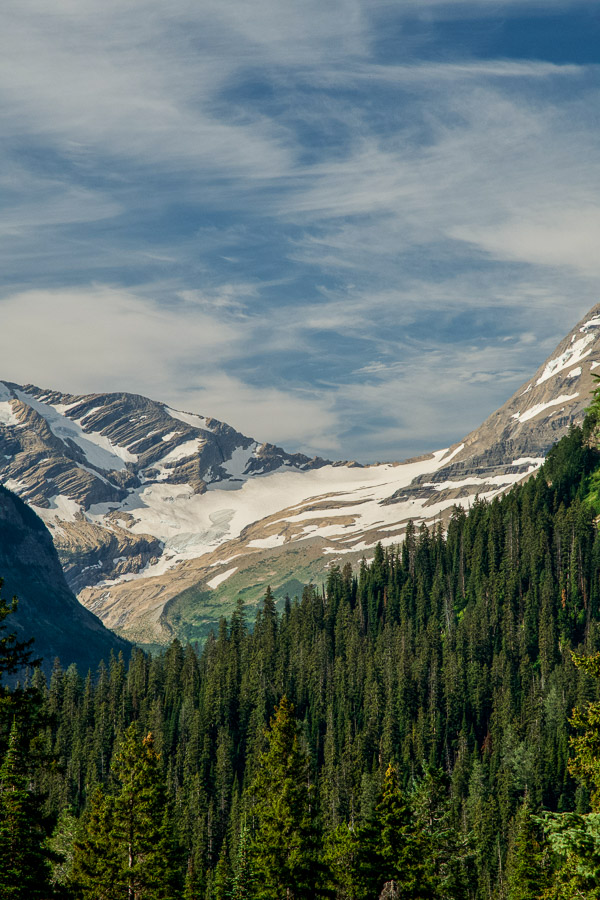
Know the local water
Since Glacier is higher in elevation than Yellowstone National Park, many of the streams and lakes will freeze. A local store owner from True Water Fly Shop in Kalispell, Mont., recommended a quick test for the streams. He summed it up by saying, “If you aren’t catching fish, switch to different streams.” Because they freeze in the winter, many streams and lakes won’t hold the vegetation and aquatic life needed to sustain fish through the winter. If the water looks like there should be fish there and you aren’t catching them, go to new water.
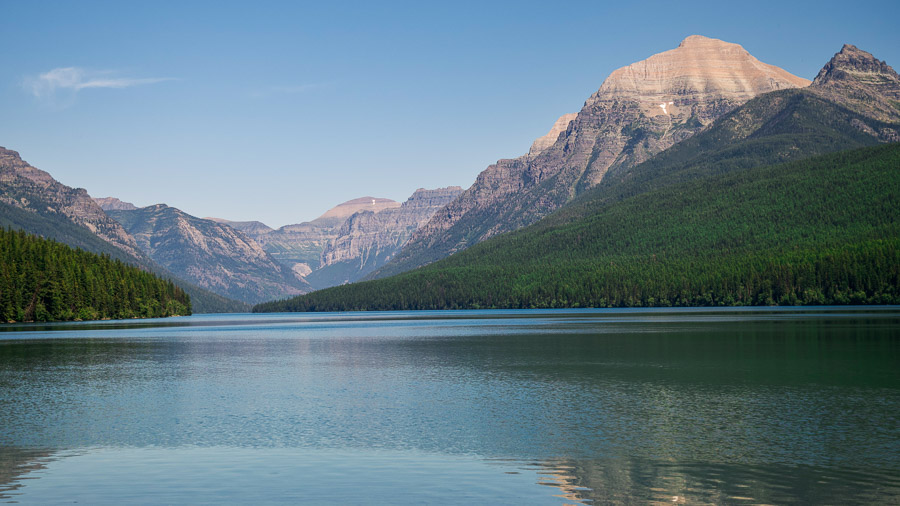
Hike off the path
Since my kids’ attention spans are short, the hikes we chose were shorter with amazing views and small elevation changes. To incorporate fishing into the trip, we chose hikes that were next to mountain streams that could possibly hold trout. One stream near Lake McDonald followed a heavily hiked trail where the parking lot was filled by 10:00 a.m. most mornings. However, by following the stream instead of the trail, we were able to catch multiple trout every 10 to 20 feet of water and keep the kids entertained.
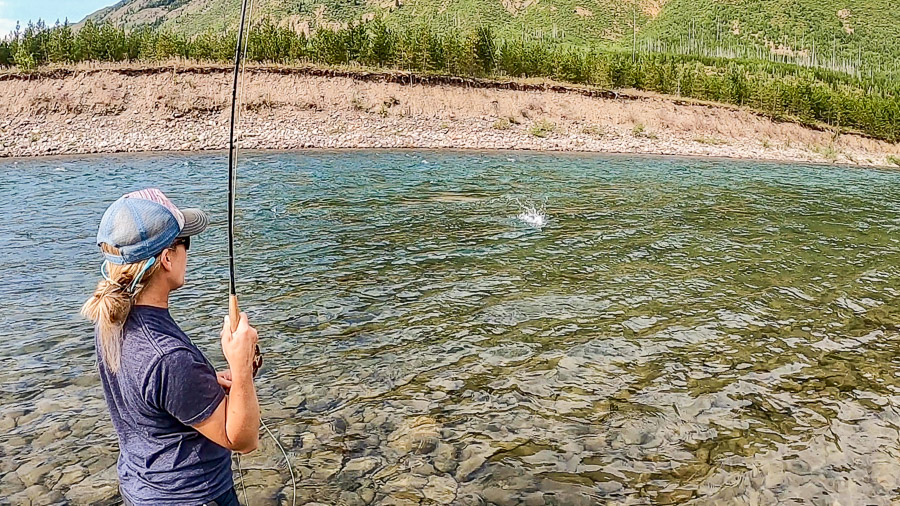
Know your trout
Glacier is home to six species of trout. One such species, the bull trout, is listed as endangered. This means anglers aren’t allowed to target them, and if you happen to catch one, it has to immediately be released and not taken out of the water. One evening on our trip, my son hooked one right at dusk near our campground and we couldn’t even legally snap a photo of it.
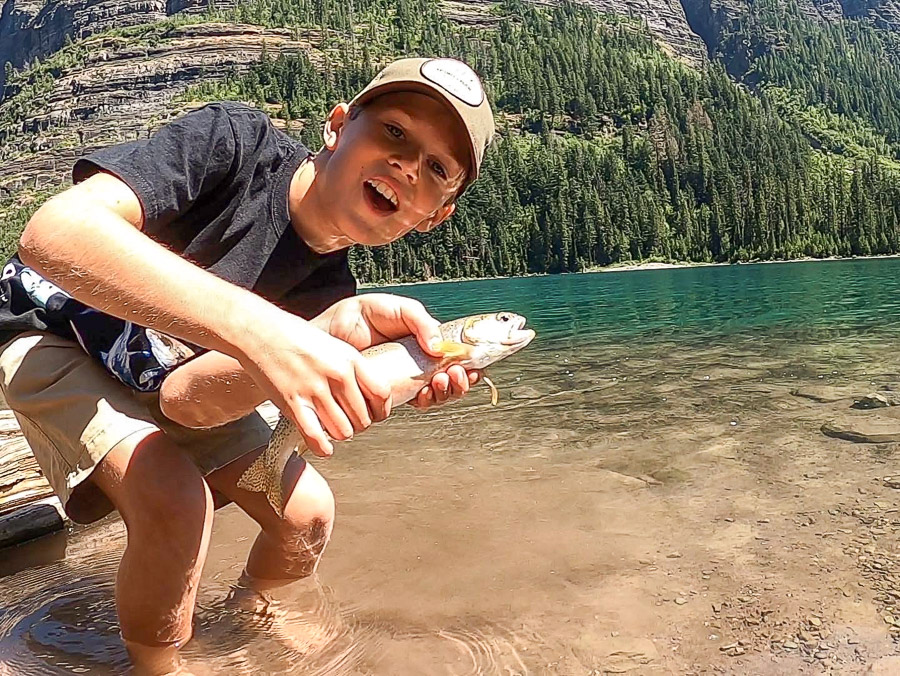
When fishing the lakes, go deep
Since much of the water freezes in the winter, there is little to no vegetation around the lake edges. During the summer months when the fishing is good, most of the trout have moved to deep, cool water in the lakes, which makes fishing from the banks difficult. My son did have some luck fishing a spinner deep and slow in Avalanche Lake, but we couldn’t cast our flies out far enough from the bank to get them down to the fish. I have heard of anglers doing quite well fishing from kayaks in the accessible lakes, but remember to bring some weight (no lead) to get the flies down to the fish.
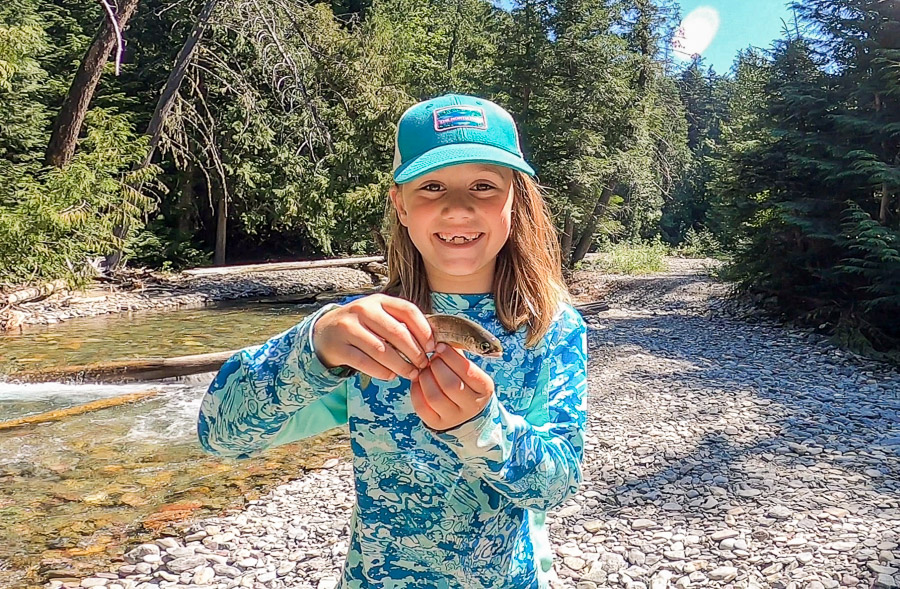
Consult the local fly shop
True Water Fly Shop in Kalispell and Lary’s Fly and Supply in Columbia Falls are both excellent local resources for Glacier National Park. Not only did both stores offer guide services, but both had a working knowledge of the hatches and an ample stock of fly fishing supplies. Both shops were more than willing to answer our questions and were extremely helpful in getting us on some trout.
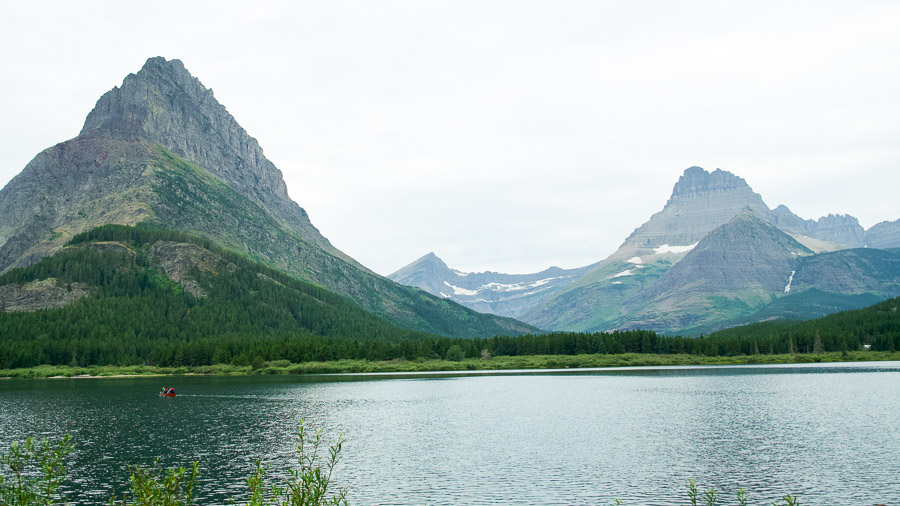
Be bear aware
According to the National Park Service, Glacier National Park is home to an estimated population of 1,000 bears. Encounters with bears in the park are few, but anglers and hikers still need to be vigilant. On our five-day trip to the park, we saw four bears from a safe distance, including three grizzlies. While fishing next to water, it’s easy for sounds to be drowned out by the running water. Bears can easily surprise anglers in these instances, and it’s important to keep bear spray on hand and easily accessible. During a park ranger talk near Lake McDonald, the ranger advised against keeping the bear spray in a backpack or inside pocket of a jacket. The canister needs to be out and the user needs to know how to deploy it in the rare case of an encounter.
The clear water and incredible views of Glacier National Park left us wanting to plan another trip as soon as possible. Surprisingly, the local trout populations were more than willing to sip our dry flies and keep us entertained the whole trip. Even though there was a lack of online resources, through consulting the local fly shops and a few other previously mentioned tips, we were able to pique the kids’ fly fishing interest and keep them wanting more.

